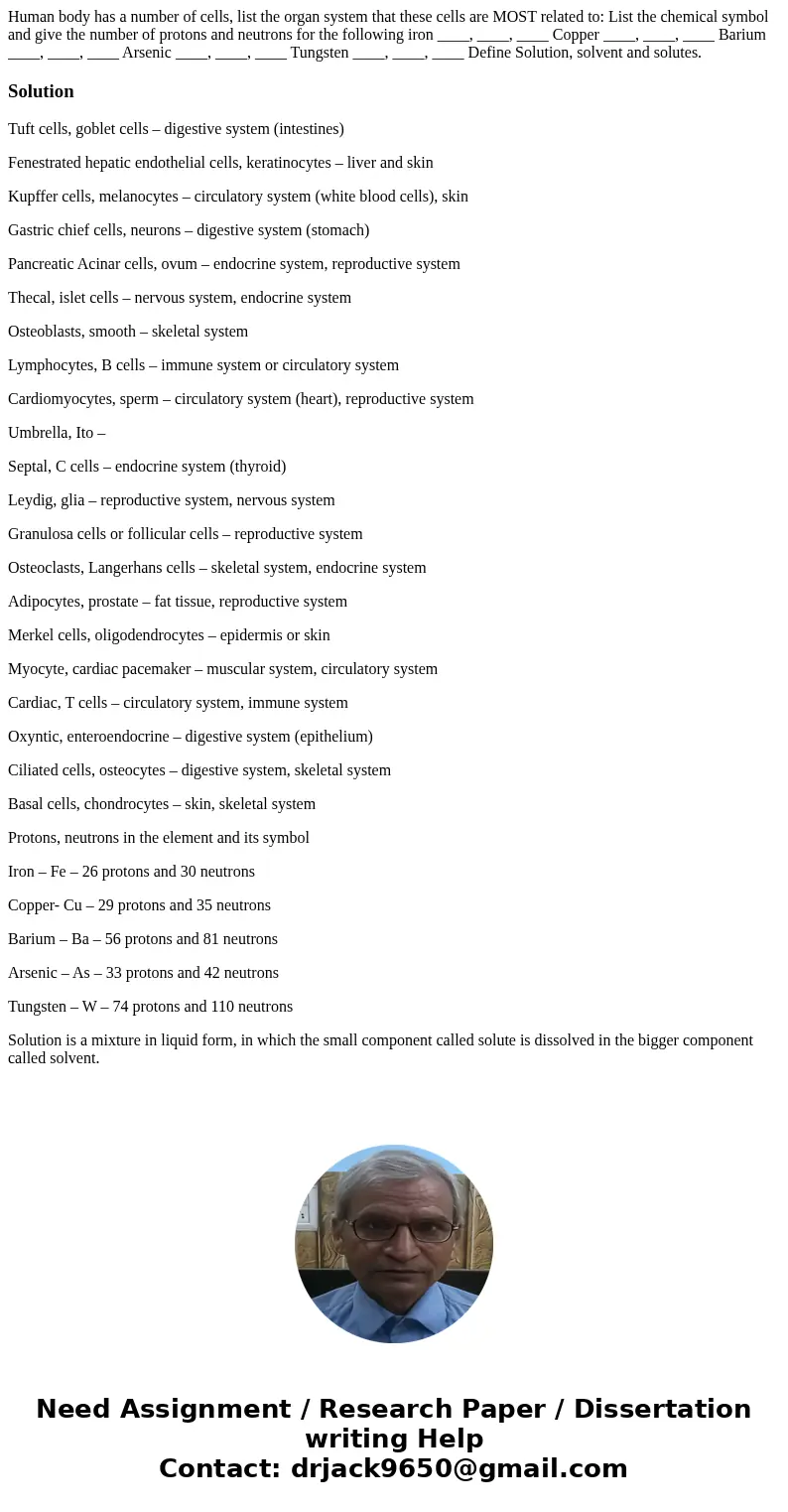Human body has a number of cells list the organ system that
Solution
Tuft cells, goblet cells – digestive system (intestines)
Fenestrated hepatic endothelial cells, keratinocytes – liver and skin
Kupffer cells, melanocytes – circulatory system (white blood cells), skin
Gastric chief cells, neurons – digestive system (stomach)
Pancreatic Acinar cells, ovum – endocrine system, reproductive system
Thecal, islet cells – nervous system, endocrine system
Osteoblasts, smooth – skeletal system
Lymphocytes, B cells – immune system or circulatory system
Cardiomyocytes, sperm – circulatory system (heart), reproductive system
Umbrella, Ito –
Septal, C cells – endocrine system (thyroid)
Leydig, glia – reproductive system, nervous system
Granulosa cells or follicular cells – reproductive system
Osteoclasts, Langerhans cells – skeletal system, endocrine system
Adipocytes, prostate – fat tissue, reproductive system
Merkel cells, oligodendrocytes – epidermis or skin
Myocyte, cardiac pacemaker – muscular system, circulatory system
Cardiac, T cells – circulatory system, immune system
Oxyntic, enteroendocrine – digestive system (epithelium)
Ciliated cells, osteocytes – digestive system, skeletal system
Basal cells, chondrocytes – skin, skeletal system
Protons, neutrons in the element and its symbol
Iron – Fe – 26 protons and 30 neutrons
Copper- Cu – 29 protons and 35 neutrons
Barium – Ba – 56 protons and 81 neutrons
Arsenic – As – 33 protons and 42 neutrons
Tungsten – W – 74 protons and 110 neutrons
Solution is a mixture in liquid form, in which the small component called solute is dissolved in the bigger component called solvent.

 Homework Sourse
Homework Sourse